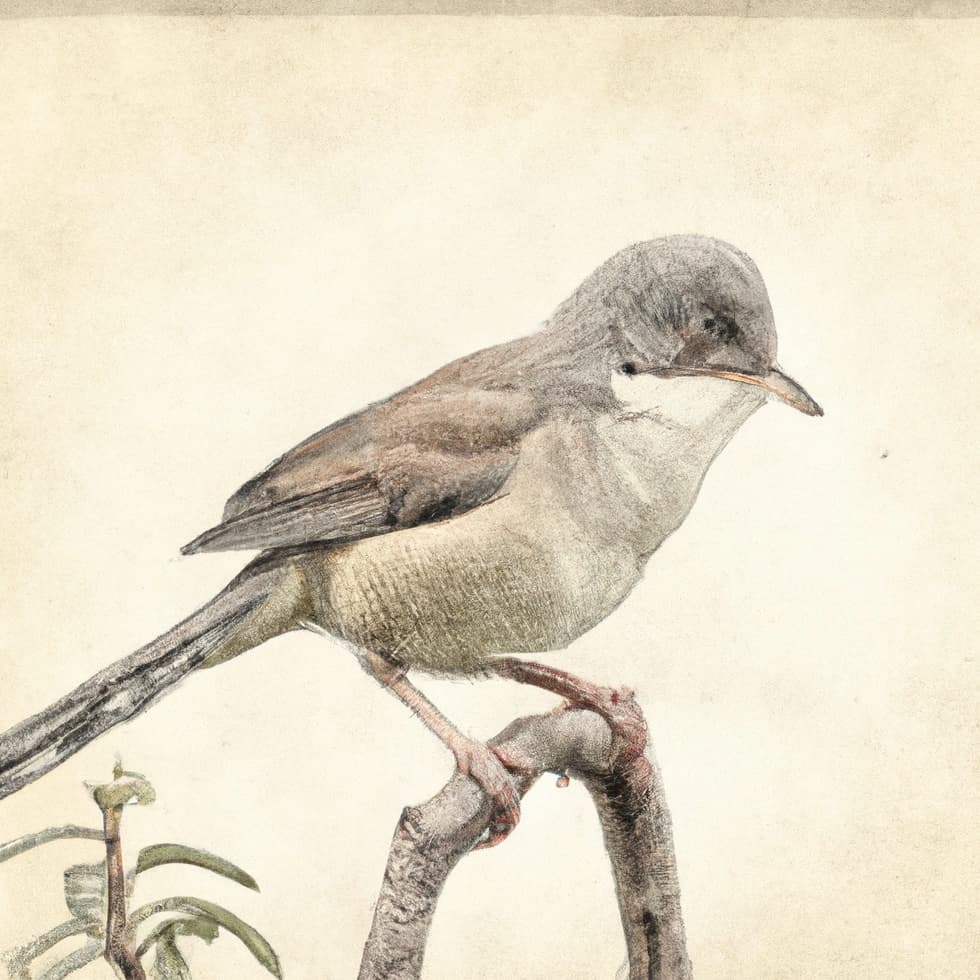
Greetings, fellow bird enthusiasts! Today, we will be exploring one of the fascinating birds of the European countryside – the Whitethroat. With its distinctive white throat and buff-coloured body, the Whitethroat is a striking sight for any nature lover. These small birds are renowned for their complex songs and acrobatic flight patterns, making them a true joy to watch. So, let’s dive right in and discover 27 curious facts about the Whitethroat!
27 Curious Facts about the Whitethroat
- The scientific name for the Whitethroat is Sylvia communis.
- Whitethroats belong to the family Sylviidae, which includes several other species of warblers.
- These birds are found throughout Europe and parts of Asia.
- The Whitethroat is a small bird, measuring approximately 14-16 cm in length.
- Male Whitethroats have a more striking white throat than females.
- Whitethroats are non-migratory birds and tend to stay in one area all year round.
- The collective noun for a group of Whitethroats is a ‘dissimulation’.
- These birds have a distinctive, rattling song that can be heard throughout their habitat.
- Whitethroats are known for their acrobatic flight patterns, often darting through dense shrubs and bushes in search of food.
- These birds are primarily active during the day.
- The Whitethroat is an insectivore, feeding primarily on insects such as flies, beetles, and spiders.
- These birds are known to build their nests in dense shrubs and bushes, typically close to the ground.
- Whitethroats are highly territorial and will aggressively defend their nesting sites from other birds.
- These birds are known to migrate short distances within their home range during the winter months.
- The Whitethroat is a protected species in many parts of the world.
- Whitethroats are able to detect small insects from a great distance, allowing them to locate potential food sources quickly.
- These birds are capable of hovering in mid-air for short periods of time.
- Whitethroats are known to make their nests out of a variety of materials, including grass, leaves, and twigs.
- The breeding season for Whitethroats typically occurs between April and June.
- These birds are able to live for up to 3-4 years in the wild.
- The Whitethroat has a short, conical bill that is well-suited for catching insects.
- Whitethroats are known to exhibit distinct colour variations in different parts of their range.
- These birds are not known to be aggressive towards other bird species.
- Whitethroats are able to see ultraviolet light, which may assist them in finding potential mates.
- The Whitethroat’s wingspan measures approximately 18-20 cm.
- These birds are known to take frequent dust baths to help keep their feathers clean and healthy.
- The Whitethroat is a beloved bird among many bird watchers and nature enthusiasts.
Where to Find the Whitethroat
Whitethroats can be found throughout Europe and parts of Asia, including countries such as the United Kingdom, Germany, and Russia. These birds are typically found in areas with dense shrubs and bushes, such as hedgerows, woodland edges, and scrubland. They tend to prefer areas with plenty of covers, as this allows them to hide from predators and forage for food more easily.
Feeding the Whitethroat
Whitethroats are insectivores and feed primarily on insects such as flies, beetles, and spiders. They catch their prey by flying through dense shrubs and bushes, darting out to catch insects in mid-air or plucking them off of leaves and branches. While it is not recommended to feed wild birds, providing a diverse and insect-rich habitat in your garden can help to attract these birds and provide them with a natural source of food.
Final Thoughts
In conclusion, the Whitethroat is a true marvel of the European countryside. From their striking white throats to their complex songs and acrobatic flight patterns, these birds are a joy to watch and a delight to study. If you are lucky enough to encounter a Whitethroat on your next nature walk, take a moment to appreciate its beauty and unique behaviours. With their ability to see ultraviolet light and detect small insects from a great distance, Whitethroats are sure to make a lasting impression on anyone who has the pleasure of encountering them in the wild.